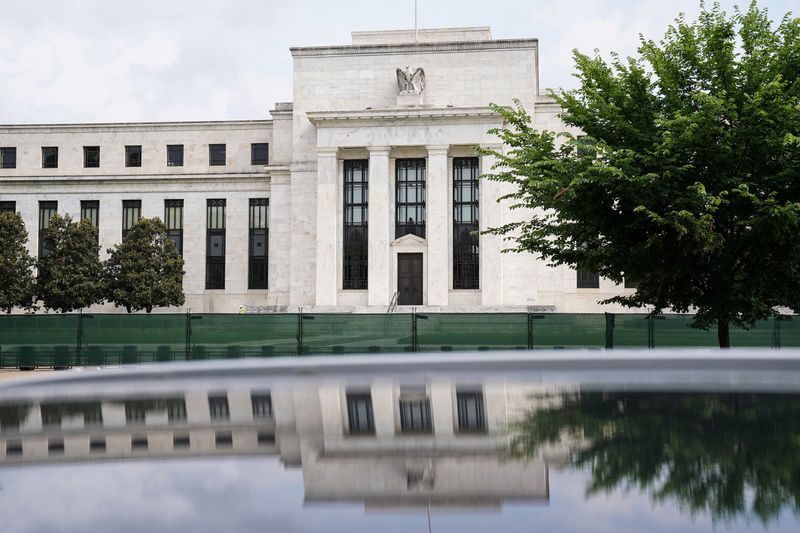Street Calls of the Week
Investing.com - Analysts unanimously forecast that the U.S. Federal Reserve will escalate its key overnight interest rate by 25 basis points at its next policy meeting, marking the final step in this round of monetary tightening.
The strength and resilience of the economy, coupled with historically low unemployment rates have repeatedly defied predictions since the Fed initiated one of their most assertive rate hikes in history over a year ago.
As June saw inflation decelerate, with consumer price index (CPI) measures dropping to 3.0% from May's high of 4.0%, Wall Street analysts speculated that inflation could be curbed soon leading some to anticipate potential rate reductions as early as late next year.
However, there are ongoing debates regarding whether additional increases might be necessary to maintain disinflation without harming economic stability.
Despite temporary pauses on previous occasions, Jerome Powell and other Federal Reserve policymakers continue to forewarn further tightening measures due to persistent underlying inflation concerns.
Recent survey data suggests an emerging belief in sustained higher rates for longer periods; respondents expecting at least one rate cut by March next year fell dramatically from last month’s figure – down from 78% to 55%.
Jan Nevruzi, NatWest Markets' U.S Rates Strategist cautions against complacency despite softer CPI figures stating it would not be prudent policy-wise, emphasizing continued vigilance against inflationary trends seen previously.
Market traders and economists seem slightly misaligned with Fed expectations as projections suggest peak benchmark overnight interests ranging between 5.50%-5.75%. However less than a fifth of those polled anticipate reaching such levels.
Meanwhile, Dollar value has plummeted against major currencies due to lower expectations around future hikes which potentially escalates import costs, thus maintaining elevated pricing pressures.
While targeted personal consumption expenditures index is set at 2%, current values stand significantly higher at 3.8% for May.
